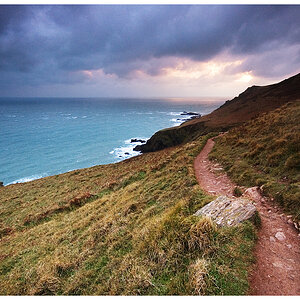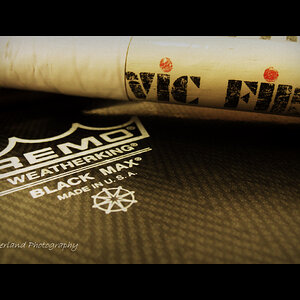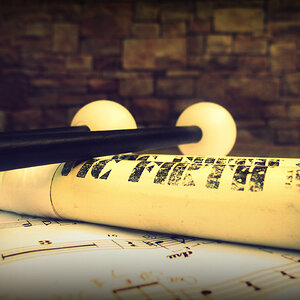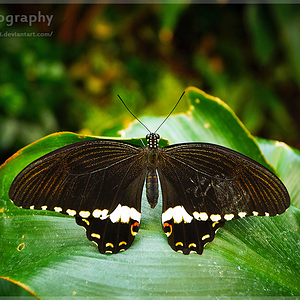Solarflare
No longer a newbie, moving up!
- Joined
- May 24, 2012
- Messages
- 2,898
- Reaction score
- 395
Do You Believe in DxOMark? | byThom | Thom Hogan
The total number I've always ignored anyway, because, as Thom said: I have no clue what it even means. So, the Canon 7D Mk II has same total number as Nikon D300s ? Riiight. And what does that even mean ?
The individual numbers are much better, but already misleading. For example the D4s reportedly gets into a couple banding problems at really high ISOs, but has less noise overall than the Sony A7s, which however has no banding problem. How exactly is that reflected in the DxOMark rating ? Not at all. Or the Leica M9 vs M Type 240 - there was a really interesting article about those two on Steve Huffs site, recently:
And about this part with 'adjustments for “print” and “screen."' - as an hobbyist, the question "can the output media display it ?" never had much weight for me. Frankly I just want as much quality as possible for any future media, not just for current media. I kind of think of my images more as statements for eternity, not as a "use now and discard quickly later" entities. Thus I rather want to catch moments in time, NOW - in the best quality already possible. For pretty much the same reason I still monitor companies like Leica, hoping for a camera that I can buy once and after ignore the camera market after for a decade or whenever the camera breaks. Though technically my Nikon is probably already pretty close to that level already, anyway. Either way, ergonomics and build quality matters to me, thus my rating of a company like Leica in respect to bang for the buck might be a bit different from other people.
P.s.: This site's tendency to "shorten" quotes is really annoying, as is the "invisible link" policy.
Now this is a very nice review of the DxOMark rating system, that gave me some pieces of information I wasnt aware of before. I've always wanted some more indepth comment on DxOMark, because frankly, I always felt these numbers are quite questionable.[...] That’s referring to DxOMark’s “overall score” value, which if anyone can clearly explain how they come up with that single number, let alone what it actually means in a pragmatic sense, I’d be appreciative. [...] Quick way to know that it’s faux: what’s the difference you’d see in a camera labeled “70” versus “72”? Right, thought so.
I’ve written before how the digital camera world has basically followed the old high fidelity world in terms of numbers-oriented marketing and testing. Back in the 70’s and 80’s people got crazy about frequency or power ratings for high fi gear. Yet in the long run, people who listened to the products found that slavish devotion to buying better numbers didn’t actually get them “better sound.”
One thing a lot of folk don’t get is that raw tests tend to be demosaic dependent. As I’ve pointed out before, Adobe converters do a better job with little override on Canon raw files than they do on Nikon raw files. [...]
[...] At base ISO, the two are close, sure, but look at what happens as you boost ISO. Indeed, if you’re going to look at DxOMark tests, I suggest that you always pull up the “Measurements” tab and look closely at what’s going on there. [...]
It’s interesting to note that DxO seems to be playing a lot of angles. First, they are presenting themselves as impartial, numeric oriented testers (e.g. the scores). Second, they are presenting themselves as reviewers (e.g. "If Canon could only address performance at base and low ISO, the EOS 7D Mk II would make a thoroughly convincing all-round choice, but in this category the Sony A77 II looks to be the more compelling option."). Third, they sell their test equipment and software test suites to camera companies (Nikon, for instance, but I don’t believe Canon is one of their clients). Fourth, they present themselves as the best demosaic option, better than the camera makers’ options (e.g., DxO Optics Pro). They have some clear conflicts of interests that are not easily resolved. So be careful of just gobbling up their “results” as absolutes.
[...]
So, for example, the 7DII has a landscape dynamic range of 11.8EV, the D7100 a range of 13.7EV. Before moving on, I should note that these aren’t exactly what you’d get out of the camera in images (e.g. 12 stops of data on the 7DII, 14 on the D7100). DxOMark’s numbers are closer to engineering DR than usable dynamic range, even with their adjustments for “print” and “screen." Engineering DR is measured between the lowest value that hits a signal-to-noise ratio of 1:1 (which we’d never use) and the highest saturation value of the sensor. Pragmatic DR has no agreed upon definition. When I report dynamic range numbers, as I do in my books, these are based upon my own personal standards, which have some fairly strict observed guidelines towards visibility of noise of any kind.
Even though those DxO-reported numbers aren’t what I’d expect in my images, they do tell me something: I might be able to dig more shadow detail out of the D7100 image than the 7DII image at base ISO, all else equal. That’s actually no surprise. This has been true of the Sony versus Canon sensor difference for quite some time now. If you’re a big fan of cranking the Lightroom Shadow slider to max, you’re going to be doing more noise correction on a Canon than a Nikon. Nothing’s changed here. However I’d point out that neither camera is likely to be able to hold extreme landscape situations in a single exposure: I’d still be bracketing and applying HDR type techniques to construct images in such cases. [...]
So I guess the point I’m trying to make here is to understand why it is that you’re even looking at test results such as DxOMark. You can certainly draw some conclusions from their results. But not “92 is better than 76” or any other Overall Score mark. You have to look at something specific, e.g. dynamic range, and understand why that might be important to you.
The total number I've always ignored anyway, because, as Thom said: I have no clue what it even means. So, the Canon 7D Mk II has same total number as Nikon D300s ? Riiight. And what does that even mean ?
The individual numbers are much better, but already misleading. For example the D4s reportedly gets into a couple banding problems at really high ISOs, but has less noise overall than the Sony A7s, which however has no banding problem. How exactly is that reflected in the DxOMark rating ? Not at all. Or the Leica M9 vs M Type 240 - there was a really interesting article about those two on Steve Huffs site, recently:
So yeah, again the DxOMark rating is misleading.In practice, shooting in low light was nearly as limited for the M240 as it was for the M9, which has a practical ISO limit of around 640, after which banding behaviors are the norm with image adjustment.
And about this part with 'adjustments for “print” and “screen."' - as an hobbyist, the question "can the output media display it ?" never had much weight for me. Frankly I just want as much quality as possible for any future media, not just for current media. I kind of think of my images more as statements for eternity, not as a "use now and discard quickly later" entities. Thus I rather want to catch moments in time, NOW - in the best quality already possible. For pretty much the same reason I still monitor companies like Leica, hoping for a camera that I can buy once and after ignore the camera market after for a decade or whenever the camera breaks. Though technically my Nikon is probably already pretty close to that level already, anyway. Either way, ergonomics and build quality matters to me, thus my rating of a company like Leica in respect to bang for the buck might be a bit different from other people.
P.s.: This site's tendency to "shorten" quotes is really annoying, as is the "invisible link" policy.



 Who am I supposed to believe now?
Who am I supposed to believe now?  I have no where or no one to
I have no where or no one to 









![[No title]](/data/xfmg/thumbnail/39/39292-4169a355b794ae9735845c4ad45d06ff.jpg?1619738958)

![[No title]](/data/xfmg/thumbnail/39/39289-c5ea6a611707fdd5786347f4a67d63ae.jpg?1619738957)
